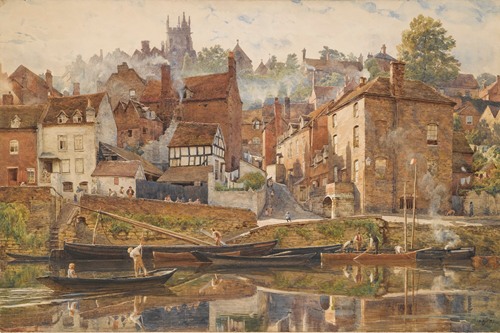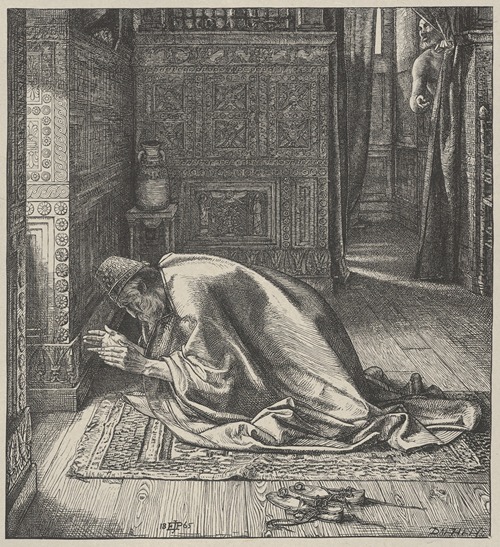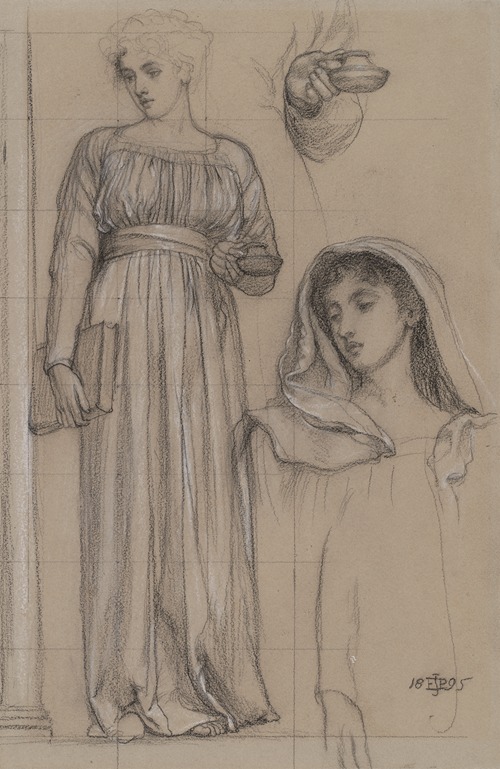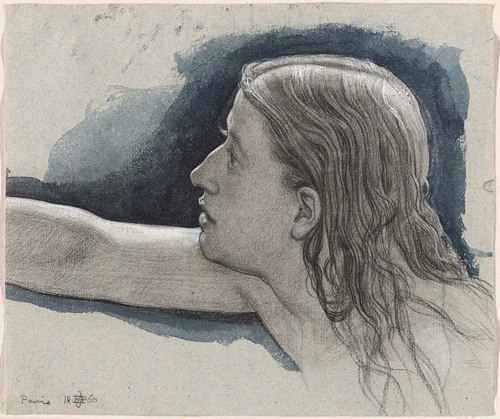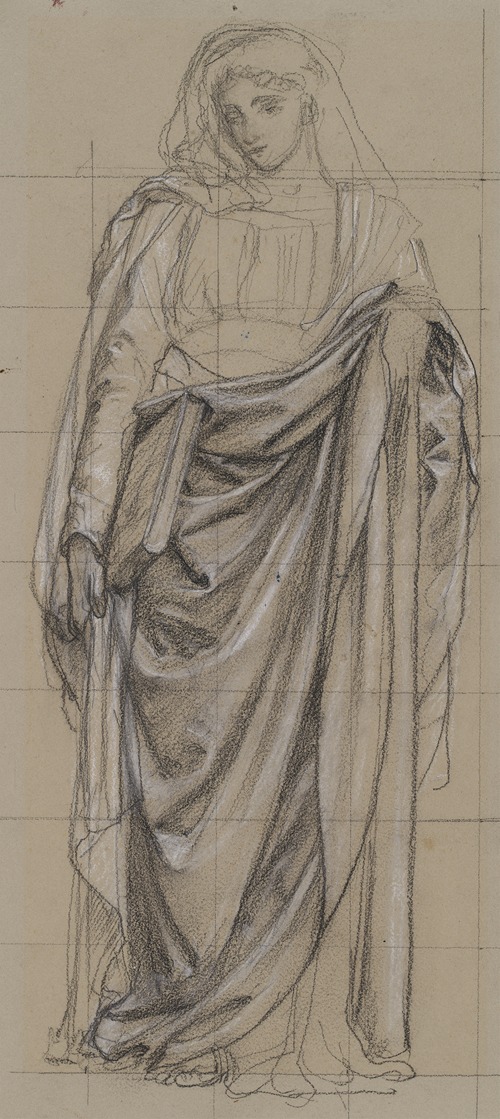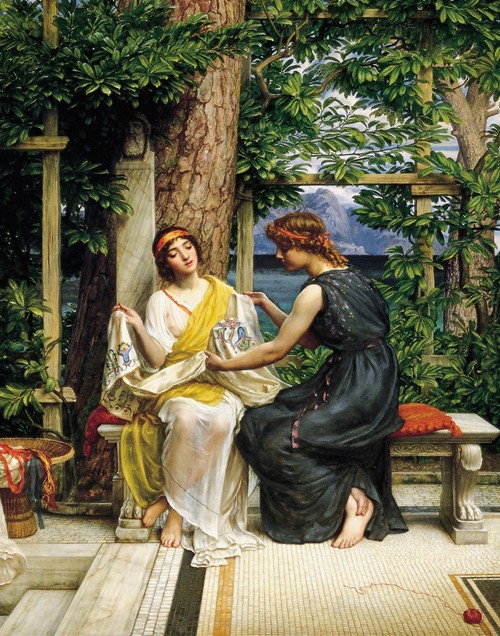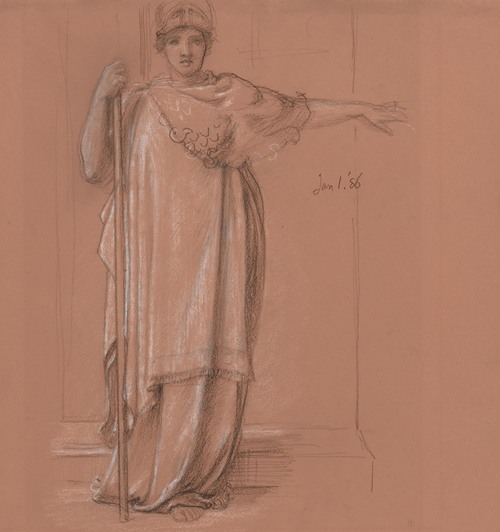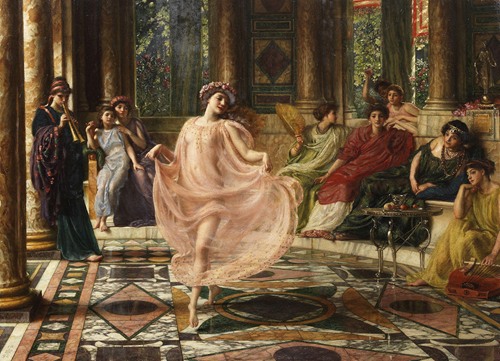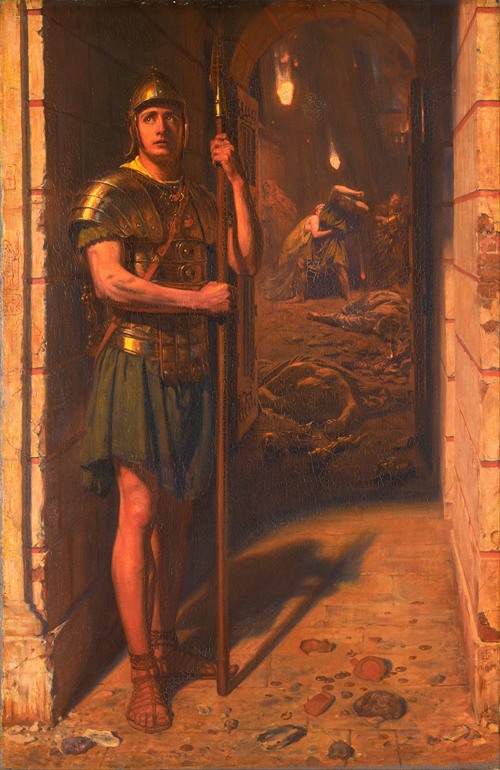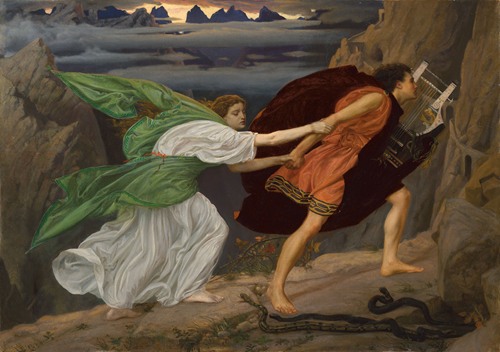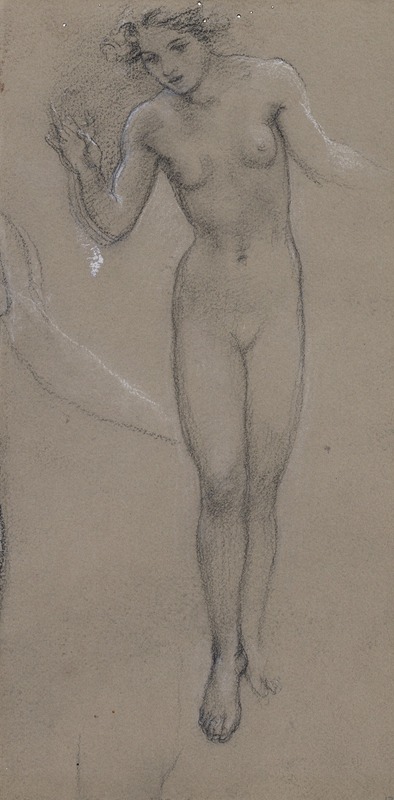
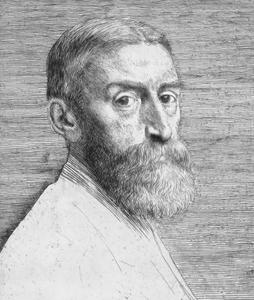
Sir Edward John Poynter was an English painter, designer, and draughtsman, who served as President of the Royal Academy.
Poynter was the son of architect Ambrose Poynter. He was born in Paris, though his parents returned to Britain soon after. He was educated at Brighton College and Ipswich School, but left school early for reasons of ill health, spending winters in Madeira and Rome. In 1853, he met Frederick Leighton in Rome, who made a great impression on the 17-year-old Poynter. On his return to London he studied at Leigh's Academy in Newman Street and the Royal Academy Schools, before going to Paris to study in the studio of the classicist painter Charles Gleyre where James McNeill Whistler and George du Maurier were fellow-students.
He became best known for his large historical paintings such as Israel in Egypt, followed by St George for England, a mosaic for the Central Lobby of the Palace of Westminster, depicting St George and the Dragon and perhaps culminating with The visit of the Queen of Sheba to King Solomon. He was admitted as an associate of the Royal Academy in 1869. Poynter held a number of official posts: he was the first Slade Professor at University College London from 1871 to 1875, principal of the National Art Training School from 1875 to 1881 and director of the National Gallery from 1894 to 1904 (overseeing the opening of the Tate Gallery). He became a full Royal Academician in 1876. In 1896, on the death of Sir John Millais, Poynter was elected President of the Academy. He received a knighthood in the same year and an honorary degree from Cambridge University in 1898.
